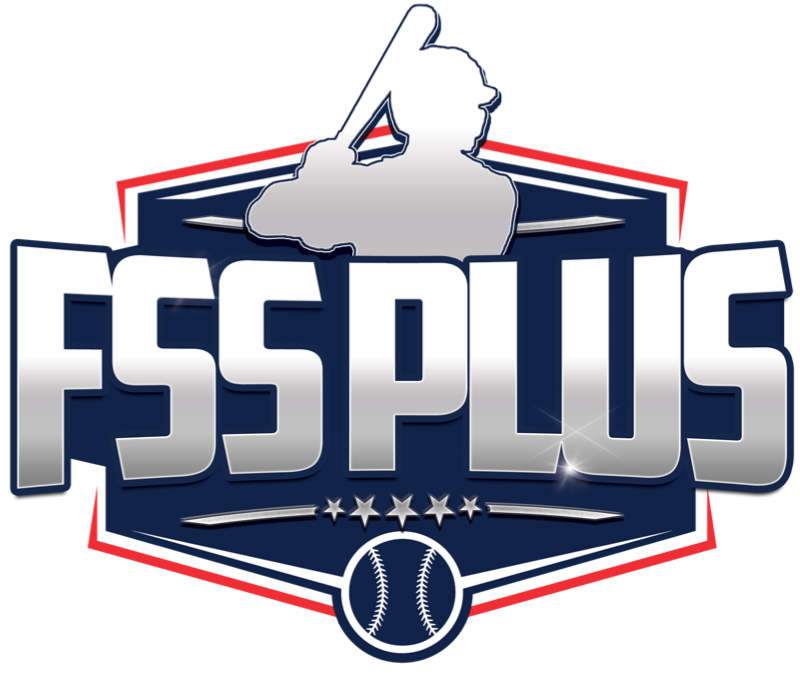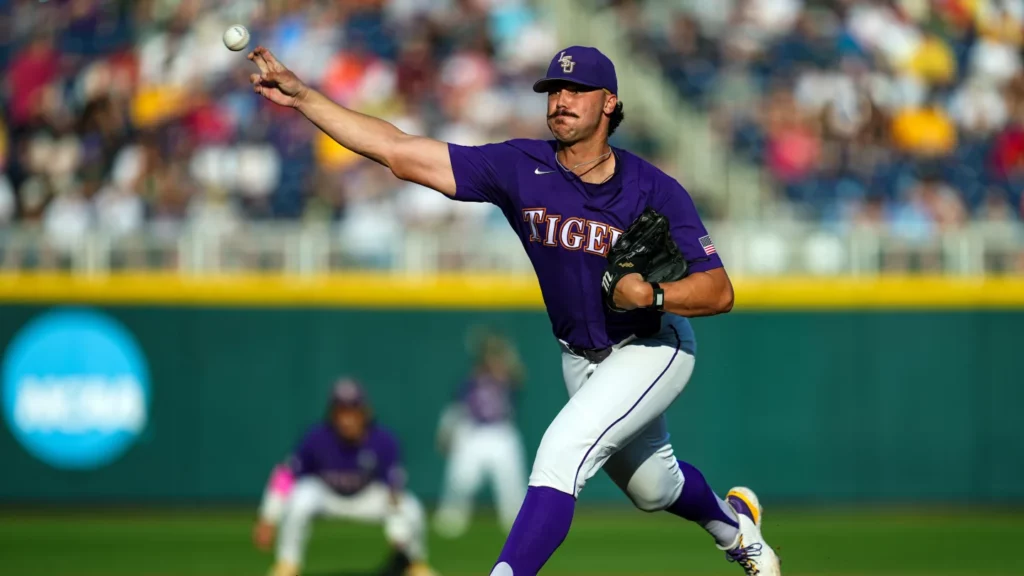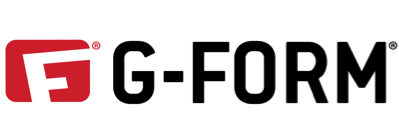We have arrived. The 2023 MLB Draft is here. It’s a stellar year with arguably the top two-round crop of talent the draft has seen in close to a decade. There figures to be extraordinary talent available well-throughout the first three rounds. The 2023 MLB Draft will consist of 614 picks. Thus, the Top 614 prospects. This will be the structure of Future Stars Draft Boards moving forward. The hope, in time, is we nail a higher and higher percentage of players ultimately drafted. The goal this year? A 70-percent hit rate.
The MLB Draft Combine did wonders for a few prospects. Some nailed their interviews and tested so well, it was hard not to shove them a tick higher on our board. Final parsing of data also unearthed some real gems, specifically on the college pitching side. Mid-major and junior college pitching on this board is something that should stand and out hold well on day two and three of the draft.
Arizona outfielder Chase Davis has pummeled his way into the top-30 pick range. Virginia catcher Kyle Teel finished strong and appears poised to go in the Top-8 picks. Guys like Tommy Troy, Brock Wilken and Matt Shaw have done absolutely nothing to steer scouts clear of their upside, and should go early.
There’s a bit more uncertainty on the college pitching side, but guys like Jackson Baumeister, Joe Whitman, Ty Floyd and Juaron Watts-Brown hope to buoy a down year.
High school pitching also saw a meteoric rise this spring with cold-weather pitching carrying some weight. Guys like Alex Clemmey, Josh Knoth and Steven Echavarria infused much-needed juice into this crop.
At the end of the day, for us, Dylan Crews remains the slam dunk top overall prospect in this class. There are obviously circumstances that could lead to Crews not being the No. 1 pick, but in terms of who the top overall prospect is, Crews has quite a wagon of supporters behind him.
If you’re looking for pro comparisons on the top college bats in the class, give THIS a read.
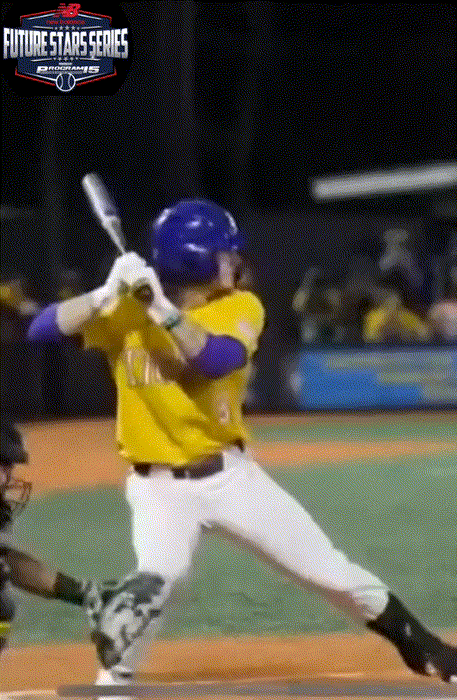
- Dylan Crews, OF — LSU
Crews has been a headliner going back to his high school days. He’s long been considered a first round talent, but the COVID-shortened 2020 season limited scouts’ looks at the Lake Mary grad.
Crews possesses plus raw power and he gets into just about all of it thanks to a premium bat path and an approach well beyond his years. He hardly ever chases outside of the strike zone, and when pulling the trigger makes hard contact at impressive rates. Crews really doesn’t have many holes in his offensive game and could move quickly through a minor league system.
Defensively, scouts believe Crews could stick in centerfield as an average defender, but most believe he’ll slide to a corner where his above average speed and plus throwing arm will play more comfortably. Crews is the total package and the argument can be made he’s the best projection college bat since Bryce Harper.
2. Paul Skenes, RHP — LSU
It’s been an unreal year for Paul Skenes. After transferring into Baton Rouge after two years at the Air Force Academy, Skenes saw his stuff explode under the direction of pitching coach Wes Johnson. Now he’s being talked about as the best college pitching prospect in 20 years.
The fastball catches the headlines sitting 98-99 deep into outings and grabbing triple digits with regularity both early and deep into his starts. The pitch explodes at the top of the zone and he commands it very well. Skenes throws a slider close to 90 mph, and it’s been a whiffs machine all season. There’s also a low-90s changeup in there, though he’s hardly had to use it. Ironically, scouts liked the changeup more than the slider entering the season.
As for intangibles, Skenes hides the baseball efficiently making for an even more frustrating experience at the plate for hitters. He comfortably has two 70-grade or better offerings and looks like the type of arm who could be pitching on a Major League roster before the 2024 season comes to a close.

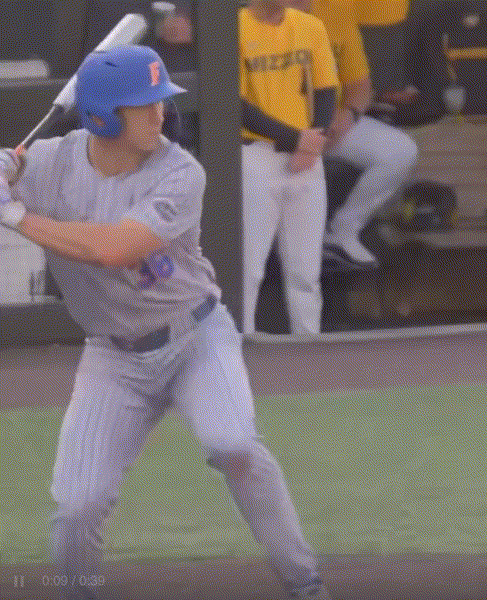
3. Wyatt Langford, OF — Florida
After hardly playing at all in 2021, Langford burst onto the scene in 2022 as a regular for the Gators. He proved himself one of the most impactful players in college baseball blasting 25 homers as part of his complete-player profile.
Langford’s bat carries his prospect status. It’s plus raw power and an above average hit tool, maybe a tick better. He doesn’t expand the zone, and his ability to cover spin and velocity in the strike zone is tough for his peers to match. The exit velocities here compare favorably to just about any single player in this draft class.
He’s a plus runner who has the chops to handle centerfield or left field at the next level. It’s polished too. Langford is yet to record an error in his three-year Gator career. Langford’s throwing arm may be his only tool that is below above average grade. The standout Gator has a chance to join the 25-25 club at the next level while providing high on-base clips.
4. Walker Jenkins, OF — South Brunswick
Jenkins is the most physical prep bat in the 2023 class with a legitimate shot at a 60 hit tool and 60-grade game power. Between he and Max Clark, it’s essentially a toss-up in this spot depending on your flavor.
Jenkins has had an extremely loud spring, albeit a short sample at time of publish. His physicality really stands out, and his athleticism in the corners, as well as his plus throwing arm look like real assets moving forward.
On top of his traits on the diamond, Jenkins is a unanimous 80-grade human being with an extremely humble disposition and a unique approach to his own professional development. Jenkins is an accomplished swimmer in his off-seasons. You’d be hard-pressed to find another player who scouts speak more highly of than Jenkins. It’s a cherry-on-top that he has 30-homer upside moving forward.

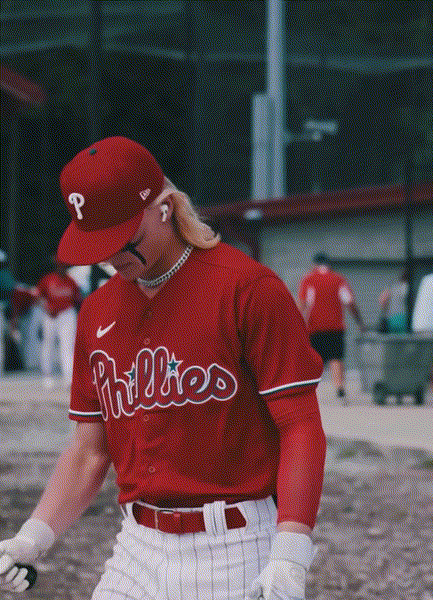
5. Max Clark, OF — Franklin Community
Clark has a very real shot at becoming a 5-tool player at the next level. The hit tool really stands out with a long resume of hitting good arms.
Clark is a plus runner who takes strong routes in centerfield, his above average throwing arm holding runners in place. Clark went through a small swing change this spring to add a bit more loft to what was a hit-over-power profile entering the year. That said, the bat speed is unquestionable. The raw power is in there, it all depends on whether he’ll unlock it in games.
Clark figures to stick in centerfield where a Grady Sizemore type of career could be in the cards if everything clicks.
Finding another player in the 2023 class with a hungrier desire for greatness would probably lead to dead ends. Clark plays with a chip on his shoulder.
6. Kyle Teel, C — Virginia
Kyle Teel has shown just about everything a scout could ever want to see from a top flight draft prospect in 2023. He possesses borderline elite bat-to-ball skills with contact rates rivaled by very few in the class, especially when considering the bat speed and impact. Teel has impressive raw power for his size. He could grow into a solid average power bat at the next level, a guy who flirts with 18-22 home runs per year.
Teel is a base hit machine, but pull-side bombs have become commonplace for the 6-foot-1-inch backstop. He’s a fighter at the plate. While his chase rates are a bit high, and that’s a concern for some scouts, his ability to foul off pitches well outside of the zone is remarkable. Teel was the only player in the country with a contact rate on pitches outside of the zone north of 75 percent who also averaged 88 mph exit velocities. That ability to battle and also impact the ball is rare.
Teel is an above average athlete, and above average runner, and he possess the agility and twitch behind the plate to project back there long-term. The arm strength is also above average. This is a unique profile and one teams are awfully excited over.
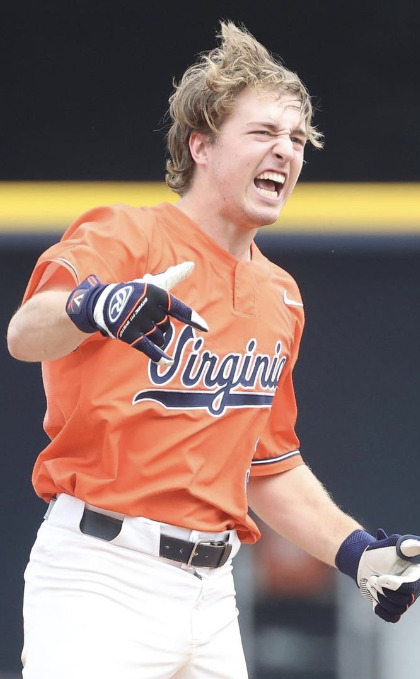
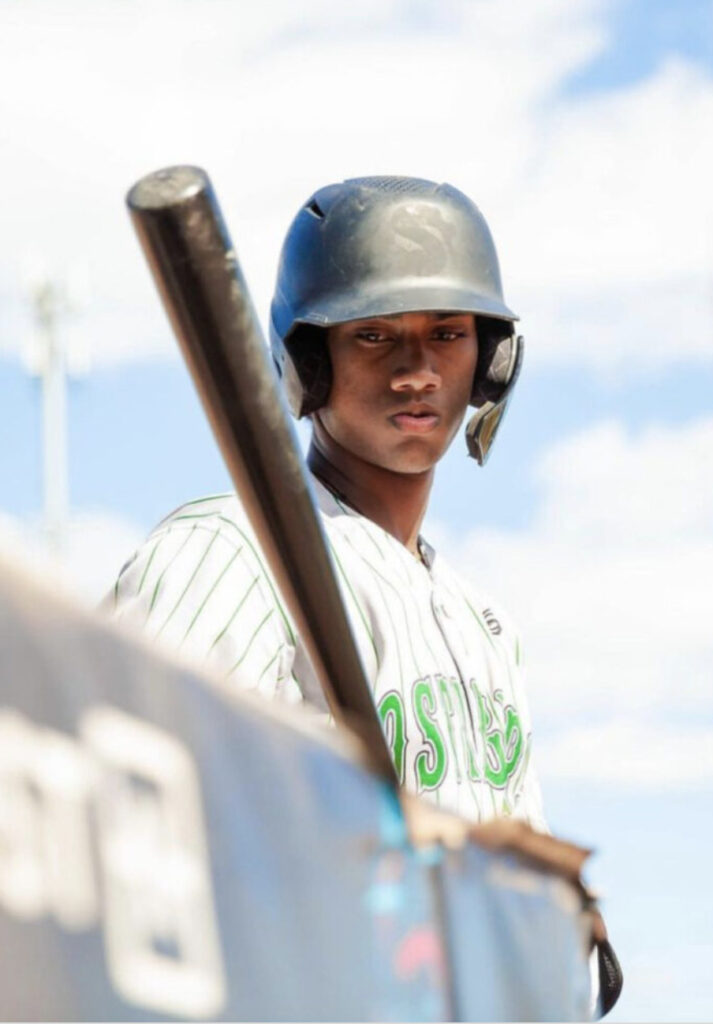
7. Arjun Nimmala, SS — Strawberry Crest
Arjun Nimmala checks virtually every single box a team could ever derive from pre-draft models. He’s extremely young, just 17 years old and won’t turn 18 until December. He’ll play his entire full season of professional baseball, 2024, as an 18-year-old.
On top of that, Nimmala plays up the middle on the dirt and projects to stay there with a plus throwing arm and above average athleticism for the shortstop position. He’s also a solid average runner.
Nimmala’s best tool is without question what some believe will eventually become 70-grade raw power, and he’s already getting to it. Scouts would like to see Nimmala handle breaking balls a bit better, but given his age and lack of advanced instructional training, most believe he just hasn’t had the chance to break through in that category yet. Nimmala has a chance to slug with the elite shortstops in the game if the hit tool gets to a place that allows him to battle in counts.
8. Chase Dollander, RHP — Tennessee
While Dollander entered the season as the prohibitive favorite to be the first arm off the board in July, his stuff regressed a tick and his production dipped as well.
Ultimately, we’re still talking about a reasonably elite pitching prospect with a fastball touching 98, resting 94-95 later in outings. His slider is his best weapon, a mid-80s sweeper with two-plane tilt. It’s a metric and analytic darling of a pitch. Dollander has a full assortment of pitches including a low-80s curveball and a mid-80s changeup. Both pitches grade average or better depending on the night. Mechanically, it’s a reasonably elite operation that allows Dollander to pound the strike zone. He repeats it well. There are very little relief concerns here.
If Dollander can recapture some of the hop on his fastball he seems to have lost and miss a few more bats with the heat, his slider should see a noticeable jump in effectiveness. He’s not far from what he was in 2022 and that has teams excited.

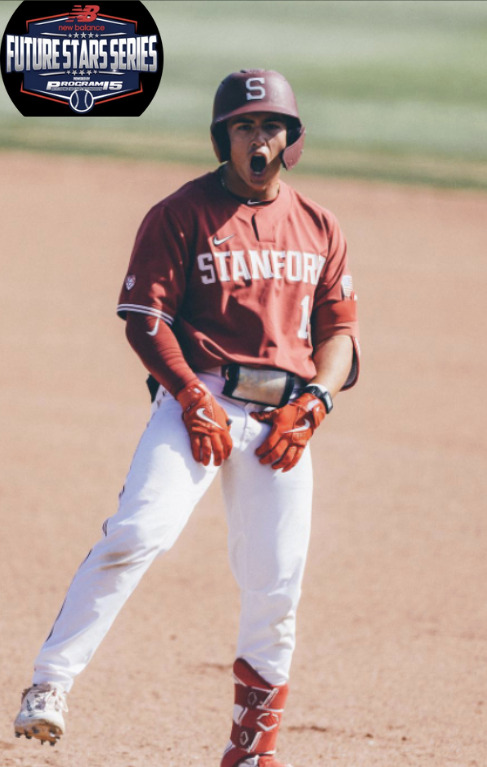
9. Tommy Troy, 2B — Stanford
Tommy Troy is one of the strongest players in the 2023 class with a beautiful, compact, violent right-handed swing with legitimate plus power to all parts of the yard. Troy covers every quadrant of the strike zone and has one of the best resumes in college baseball handling velocity.
An above average hit tool, maybe plus, Troy has a shot at hitting .280 at the next level with impact and thunder in the bat. There’s a very real shot we’re talking about one of the more impactful second base bats in baseball here 5 years from now.
Troy is an above average runner who gets to balls on the dirt and makes plays, though his average arm and shorter, choppier steps will limit him to second base as a pro where he projects to be an average defender. Some scouts would like to see what the profile looks like in centerfield at the next level. Troy got some run in centerfield for Cotuit on the Cape in 2022. The profile here is a bat-first infielder with power as the calling card. The whole thing could look something akin to Bret Boone when all is said and done.
10. Rhett Lowder, RHP — Wake Forest
The reigning ACC Pitcher of the Year, Lowder has some of the best pitchability in the entire class and figures to potentially be the first college arm to reach the big leagues.
Lowder been into the mid-90’s with the fastball, sitting in the low-90s later into starts with running life and impressive command to both side of the plate. He’ll mix in a four-seam fastball that doesn’t have bat-missing shape, but does get hitters off the barrel of his 2-seamer. Lowder mixes in an above average slider in the low-80’s with shorter two-plane break, but it’s his diabolical change-up with late parachute and fading life out of the zone that has been nightmare fuel for hitters. It’s one of the best changeups in the class and comfortably projects plus. Lowder really mixes it up on the mound, pitching backwards, controlling the tempo of the at-bat to his liking. Hitters shouldn’t get comfortable in any count.
Lowder has the feel for pitching and the arsenal to pitch in the bigs right now. He should move extremely quickly.
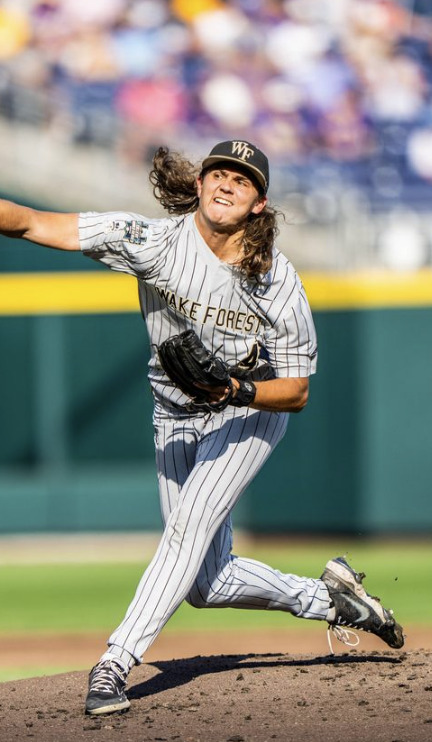
- TRADE ANALYSIS: Mariners acquire Yimi Garcia, send Jonatan Clase to the Blue Jays - July 26, 2024
- TRADE ANALYSIS: Mariners get Randy Arozarena; surrender Aidan Smith, Brody Hopkins, PTBNL - July 26, 2024
- 2025 MLB Mock Draft - July 17, 2024
